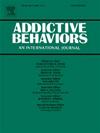Relationships between substance use treatment facilities and alcohol-attributable mortality across U.S. counties
IF 3.6
2区 医学
Q1 PSYCHOLOGY, CLINICAL
引用次数: 0
Abstract
Background
Formal substance use treatment is a key resource for recovery among people with alcohol use disorders. Limited county-level availability of substance use treatment facilities may restrict access to care and ultimately contribute to worsening health outcomes and mortality. However, it is unknown whether the availability of such facilities is associated with county-level alcohol-attributable mortality risk.
Methods
We used Bayesian hierarchical Poisson spatial regression models to assess the relationship between population-weighted county-level treatment facility availability and rates of (1) fully chronic alcohol-attributable mortality, (2) alcohol poisonings, and (3) suicides by exposure to alcohol in 2019–2020. Localized treatment facility availability was calculated using a weighted method incorporating Census block group-level population counts. We adjusted for county-level demographic and socioeconomic factors, hospital density, population density, overall mortality rate, densities of mental health practitioner offices, U.S. Census region, year, and season.
Results
There was county-level heterogeneity in the availability of substance use treatment facilities, with northeastern county treatment facility densities at least twice as high as other regions. Higher county-level densities of treatment facilities were related to increased county-level risk for chronic fully alcohol-attributable deaths and alcohol poisonings but not suicides by exposure to alcohol.
Conclusions
Availability of substance use treatment facilities and the services they offer is heterogeneous across U.S. counties. The positive relationship between population-weighted county-level densities of treatment facilities and chronic fully alcohol-attributable mortality and alcohol poisonings may suggest that treatment facilities are placed in areas of greatest demand; yet, population-level needs may not fully met by these facilities.
美国各县药物使用治疗设施与酒精导致的死亡率之间的关系
背景:正式药物使用治疗是酒精使用障碍患者康复的关键资源。县级药物使用治疗设施有限,可能限制获得护理的机会,并最终导致健康结果和死亡率恶化。然而,尚不清楚此类设施的可用性是否与县级酒精导致的死亡风险有关。方法采用贝叶斯层次泊松空间回归模型评估2019-2020年人口加权县级治疗设施可用性与(1)完全慢性酒精归因死亡率、(2)酒精中毒和(3)酒精暴露自杀率之间的关系。局部治疗设施的可用性计算使用加权方法结合人口普查块组水平的人口计数。我们调整了县级人口和社会经济因素、医院密度、人口密度、总死亡率、精神卫生从业人员办公室密度、美国人口普查地区、年份和季节。结果县域间药物滥用治疗设施可获得性存在异质性,东北县域药物滥用治疗设施密度至少为其他地区的2倍。较高的县级治疗设施密度与县级慢性完全酒精导致的死亡和酒精中毒风险增加有关,但与接触酒精导致的自杀无关。结论美国各县药物使用治疗设施的可获得性及其提供的服务存在差异。治疗设施的人口加权县级密度与慢性完全酒精归因死亡率和酒精中毒之间的正相关关系可能表明,治疗设施位于需求最大的地区;然而,这些设施可能无法完全满足人口层面的需求。
本文章由计算机程序翻译,如有差异,请以英文原文为准。
求助全文
约1分钟内获得全文
求助全文
来源期刊

Addictive behaviors
医学-药物滥用
CiteScore
8.40
自引率
4.50%
发文量
283
审稿时长
46 days
期刊介绍:
Addictive Behaviors is an international peer-reviewed journal publishing high quality human research on addictive behaviors and disorders since 1975. The journal accepts submissions of full-length papers and short communications on substance-related addictions such as the abuse of alcohol, drugs and nicotine, and behavioral addictions involving gambling and technology. We primarily publish behavioral and psychosocial research but our articles span the fields of psychology, sociology, psychiatry, epidemiology, social policy, medicine, pharmacology and neuroscience. While theoretical orientations are diverse, the emphasis of the journal is primarily empirical. That is, sound experimental design combined with valid, reliable assessment and evaluation procedures are a requisite for acceptance. However, innovative and empirically oriented case studies that might encourage new lines of inquiry are accepted as well. Studies that clearly contribute to current knowledge of etiology, prevention, social policy or treatment are given priority. Scholarly commentaries on topical issues, systematic reviews, and mini reviews are encouraged. We especially welcome multimedia papers that incorporate video or audio components to better display methodology or findings.
Studies can also be submitted to Addictive Behaviors? companion title, the open access journal Addictive Behaviors Reports, which has a particular interest in ''non-traditional'', innovative and empirically-oriented research such as negative/null data papers, replication studies, case reports on novel treatments, and cross-cultural research.
 求助内容:
求助内容: 应助结果提醒方式:
应助结果提醒方式:


